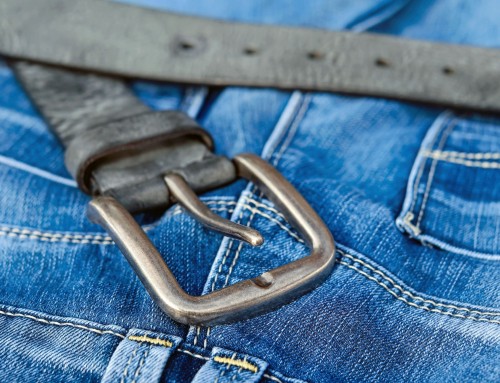Thinking of beautifying your floors and your home with new hardwood floors? The choice of hardwood flooring runs the gamut from a variety of wood types to colors, stains, and finishes.
It can be perplexing to select from all the choices on the market. Whether you’re doing the installation yourself DIY or hiring a flooring contractor, you need to know some basics about hardwood flooring before you choose.
In this article, you’ll learn what’s important in helping you to make the right choice for next home upgrade. Without further delay, here is what you need to know about choosing the ideal hardwood flooring for your home.
How to Select the Perfect Hardwood Flooring for Your Home Upgrade
This information will help you choose hardwood flooring. know these facts to choose the best wood floor.
Wood floors warm up any space and add beauty to your entire home. They’re the foundation on which to design and decorate your entire home. That’s why it’s important to know how to choose the right hardwood flooring products.
1. The Difference Between Solid Hardwoods and Engineered Hardwood Flooring
When you’re shopping for hardwood flooring, you’ll discover two types: solid hardwood and engineering hardwood flooring.
Solid wood is constructed from solid wood logs. On it, you’ll find classic tongue and groove along the edges. You can purchase solid wood unfinished if you’d like to stain or treat it yourself or buy prefinished styles.
Planks run three to eight inches in width. The thickness of planks and strips measure between 5/16 of an inch to 3/4 inches.
Engineered Hardwood Flooring
Engineered wood flooring is composed of multiple layers. It’s made with a combination of composite material, plywood and then finished off with a layer of solid hardwood.
Thicknesses can vary from 3/8 of an inch to 3/4 inches and the width can be from three to ten inches. The thickness of the solid layer on top can be from six-tenths of a millimeter to four millimeters.
While both solid hardwood and engineering hardwood can possess a different composition.
The difference is that solid woods expand and contract according to the humidity in a home which can change according to the seasons. For this reason, it needs to be installed on the ground floor
On the other hand, engineered woods contain more stability because they are made into multiple levels. They can be installed on any level of your home.
They make a good choice where moisture and dampness accumulate such as in bathrooms and basements.
2. Types of Wood Species
Hardwood flooring comes in a variety of species. But some species provide more durability on others. This depends on the hardness or strength of the wood.
For example, oaks are harder than walnut floors, but maple and hickory provide more durability than oaks.
Some of the hardest wood species include Cumaru, Brazilian cherry, and Brazilian koa. These strong hardwoods make a good choice to install in heavy traffic areas in the home.
3. Pairing Hardwood Choices to the Style of Your Home
With all the choices of species, it’s easy to choose wood flooring in a variety of colors and finishes. This makes it easy to pair wood to the design scheme and decorating style of your home.
For example, grainy, wide plank floors look superb with a country-themed decor or try a distressed look tie in a farmhouse country theme.
If the style of your home is traditional, maple, oak, and walnut, or even parquet style with two and a quarter inches to three and a quarter inches completes the look.
Consider random and wide plank floors in maple or oak for a Colonial-inspired home. Anything goes in contemporary or modern homes. What dictates the look is the finish.
For instance, for a contemporary home, match your decor with a dark brown, pewter or dark charcoal color wood flooring. Hardwood floors in a whitewashed look can also be appropriate to display modern decor.
4. Types of Finishes
The choice of finish you choose or apply if you’re doing a DIY makes all the difference in how the look of your home is presented. A distressed oak species will look completely different than a floor finished in a high gloss.
Then there are other finishes, including wire brush finishes, hand-scraped finishes, and bleaching finishes.
The level of your gloss also gives your floors a different look such as a matte no-gloss finish, medium gloss or high gloss like polyurethane.
As we briefly mentioned before, hardwood flooring comes in unfinished or prefinished flooring.
Finished floors are typically sanded and sealed at the factory or the manufacturer. The sealing acts as a barrier to dirt and moisture from getting to the boards.
If your floors are prefinished, the factory will apply seven to eight coatings of sealant. Prefinished floors usually come with good warranties. Some can even be transferred to the new owner when you sell your home.
5. Hardwood Flooring Cost and Installation
The price you’ll pay for new hardwood flooring depends on three criteria: type, finish, and wood species. Solid prefinished hardwood flooring costs between around $2.50 to $12.50 a square foot.
On the other hand, prefinished engineered wood is a little less expensive and runs around $1.60 to $9.00 per square foot.
Divide the price of the wood in half and you’ll usually get the hardwood flooring installation cost. But this depends on the flooring contractor and the type of hardwood flooring you select for your home.
The Final Word on Choosing Hardwood Flooring
Now you know how to choose the perfect hardwood flooring for your home. Consider your budget, color and finishing preferences and your home’s decor theme to select the perfect flooring for a gorgeous home upgrade.
Our company provides stylish content for women. Explore our website for more home, beauty, and lifestyle tips.











